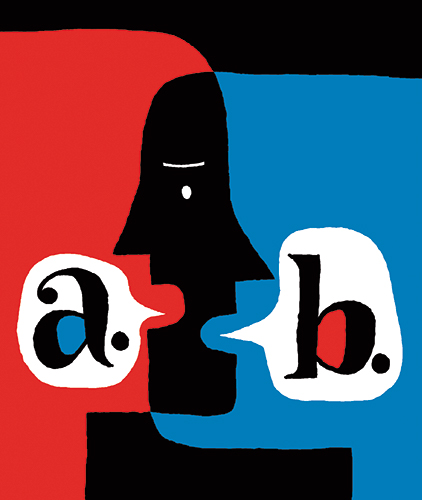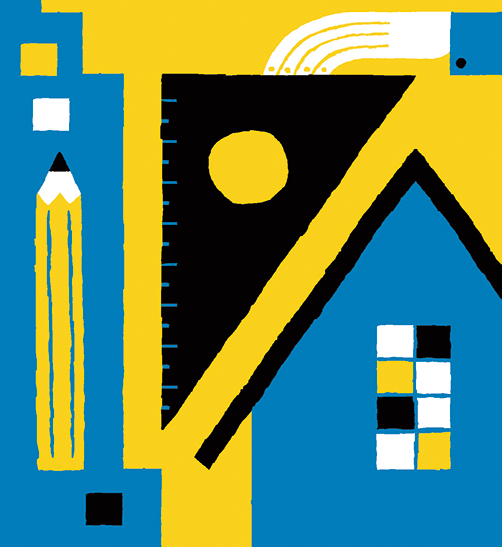Remember the sense of possibility that came from browsing the course catalog? As students chose their Fall 2019 courses, they found 59 brand-new offerings in 24 disciplines. Another 62 courses will debut in the spring. Every year, in fact, brings more than 100 new courses to Amherst. Some reflect new interests of longtime professors. Others arrive with the new instructors who teach them. (There are 42 new faculty members this academic year, a mix of visitors and tenure-line professors.) Here are a few of the new fall offerings.
Image

Making Arguments

English 170
Derek Handley retired after 28 years of active and reserve service in the U.S. Navy as a public affairs officer and, later, an instructor in the English department of the U.S. Naval Academy. He joined Amherst this fall as a visiting assistant professor of English and Chamberlain Project Fellow. “The purpose of this course,” he writes in the overview, “is to introduce students to the fundamentals of argumentation theory and research, in order to give extensive practice in analyzing and producing arguments.” The course is also an introduction to rhetorical theory, including African-American and feminist perspectives. “For us,” the course overview says, “an ‘argument’ will involve the conveying of a reasoned position on an issue of controversy” through op-eds, political ads, blogs, essays, prose fiction, films, images—and even everyday conversation. Students will examine “the concepts of argumentation, the structure of arguments and the specific techniques that arguers frequently employ.” Just in time for Thanksgiving dinner.
Image

Space and Design: Introduction to Studio Architecture

Architectural Studies 105 / Art and the History of Art 105
This hands-on design studio—from Visiting Lecturer Rachael Chase—is intended to “foster innovation as it guides students through the development of conceptual architecture,” says the course description. “Through a series of projects that build on each other, students will develop their own design language and experiment with architecture at several scales—from an interior screen that plays with light, shadow and color, to a dynamic built structure and its integration into a site.” Students “will work through both hand-drafted and computer drawings, as well as physical model-making, to understand plan, section and elevations as well as diagramming and concept models. Guest critics will attend three reviews during the semester, and students will present their work to design professionals and professors.” Chase is a working architect—she designs commercial and residential spaces—who also brings a local perspective, having grown up in a Colonial building that was the original post office in Amherst. Her firm is based in Western Massachusetts.
Image

Physics of the Human Body

Physics 260
“In my first few years at Amherst,” says Professor of Physics William Loinaz, “I spent a lot of time teaching intro physics to pre-meds who couldn’t fathom why physics was a prerequisite for medical school. I wasn’t entirely sure either, since no physicians I knew admitted to remembering or using anything from their intro physics courses.” But a Special Topics course in cardiac electrophysiology with Pam Liu ’08 reassured him that medicine requires plenty of knowledge of physics. And while teaching a 400-level course in molecular and cellular biophysics, he wondered why students had to wait so long to “see physics applied to biology in a systematic way.” Those are among the reasons why he developed “Physics of the Human Body,” which, in the words of the course description, focuses on “mechanical phenomena, such as locomotion and transport within the body, and on the mechanical properties of the materials that make up the body.” As Loinaz says, “The kinds of model-based reasoning and back-of-the-envelope calculation that’s bread-and-butter for physicists is important to learn and easy to introduce in a course like this.”
MORE NEW COURSES: American Studies: “Native Futures” | Computer Science: “Computer Architecture” | Economics: “Education and Human Capital” | History: “Diamonds in African History” | Political Science: “Identity Politics” | Psychology: “Human Neuroscience” | Religion: “Latinx Religion” | Russian: “The West Under Russian Eyes” | Statistics: “Epidemiology and Causal Inference”
Illustrations by Adam McCauley